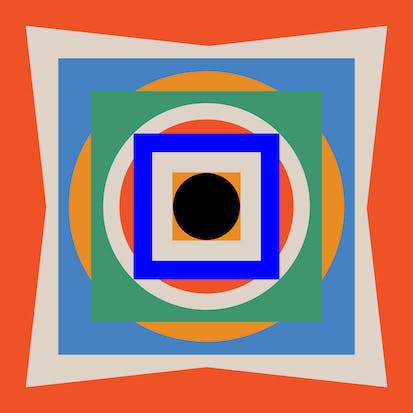- Level Foundation
- المدة 15 ساعات hours
- الطبع بواسطة California Institute of the Arts
-
Offered by

عن
Graphic Design is all around us! Words and pictures"the building blocks of graphic design"are the elements that carry the majority of the content in both the digital world and the printed world. As graphic design becomes more visible and prevalent in our lives, graphic design as a practice becomes more important in our culture. Through visual examples, this course will teach you the fundamental principles of graphic design: imagemaking, typography, composition, working with color and shape... foundational skills that are common in all areas of graphic design practice. I don't just want you to watch a video of someone talking about design, I want you to MAKE design! If you want to be a designer you have to be a maker and a communicator, so this course will offer you lots of opportunities to get your hands dirty with exercises and with more practical projects. At the end of this course you will have learned how to explore and investigate visual representation through a range of image-making techniques; understand basic principles of working with shape, color and pattern; been exposed to the language and skills of typography; and understand and have applied the principles of composition and visual contrast. If you complete the course, along with its optional (but highly recommended) briefs, you will have a core set of graphic design skills that you can apply to your own projects, or to more deeply investigate a specialized area of graphic design. To succeed in this course you will need access to a computer. You can complete this course without one but it will be tougher. Access to, and a beginner's level knowledge of Adobe Creative Suite programs, such as Illustrator, Photoshop and InDesign will help you, especially if you want to complete the optional briefs.الوحدات
Course Information
1
Videos
- Course Welcome
5
Readings
- Why study graphic design?
- About this course
- About the assignments
- Course Tools
- Academic Integrity
How Peer Review Works
3
Videos
- Why Peer Review?
- Peer Review Tips
- How to apply feedback
1
Readings
- What is peer review?
Course Communication Policies
1
Discussions
- Meet and Greet
2
Readings
- Forum Guidelines
- Requesting Peer Reviews
Images and Denotation
3
Videos
- Introduction to Imagemaking
- Denotative Imagemaking 1
- Denotative Imagemaking 2
Imagemaking Techniques
1
Peer Review
- Brief 1.1: Explorations in Imagemaking (Required)
8
Videos
- Techniques of Imagemaking 1
- Techniques of Imagemaking 2
- Techniques of Imagemaking 3
- Process, Generation, Iteration
- Imagemaking Demo 1: Printing with an Object
- Imagemaking Demo 2: Duct Tape Prints
- Imagemaking Demo 3: Improvised "Light Table"
- Example Submissions from Brief 1.1: Explorations in Imagemaking
Images and Connotation
1
Peer Review
- Brief 1.2: Making Images, Making Meaning (Optional)
2
Videos
- Connotative Imagemaking 1
- Connotative Imagemaking 2
Intro and Overview
1
Videos
- Introduction to Typography
The Lexicon of Letters
4
Videos
- The Anatomy of Letters
- Words and Spacing
- Type Size: The Point System
- Typesetting Text
How to Choose a Typeface
1
Assignment
- Typography
2
Videos
- Typefaces, Fonts and Type Families
- Typeface Categories
How to "Read" Typography
1
Peer Review
- Brief 2.1: The Character of Characters (Optional)
2
Videos
- Denotation in Type
- Connotation in Type
How to Use a Typeface
1
Peer Review
- Brief 2.2: Make a Monogram, Make a Business Card (Optional)
3
Videos
- Looking at Letterforms
- Experimenting with Letterforms
- Typographic Composition
Intro and Overview
1
Videos
- Introduction to Shape & Color
Shape and Color
1
Assignment
- Shape and Color
1
Peer Review
- Brief 3.1: Negative/Positive, Complementary/Contrasting (Optional)
7
Videos
- Graphic Shapes
- Visual Contrast
- Marks, Icons, and Symbols
- Negative/Positive, Figure/Ground
- Working with Color
- The Color Wheel
- Mixing Color: Paint, Print and Screen
Rhythm and Pattern
1
Peer Review
- Brief 3.2: Repeating Pattern (Optional)
2
Videos
- Rhythm and Pattern 1
- Rhythm and Pattern 2
Intro and Overview
2
Videos
- Introduction to Composition
- Principles of Composition
All About Contrast
2
Peer Review
- Brief 4.1: Single Contrasts (Required)
- Brief 4.2: Double and Triple Contrasts (Optional)
6
Videos
- Visual Contrasts
- Single Contrasts
- Multiple Contrasts
- Type Contrasts
- Image Contrasts
- Example Submissions from Brief 4.1: Single Contrasts
Working with Images
2
Videos
- Composition in a Single Image
- Cropping and Hierarchy
Putting It All Together
1
Peer Review
- Brief 4.3: Applied Fundamentals (Optional)
1
Videos
- Composition in Context
Conclusion
1
Videos
- Conclusion
1
Readings
- What's next?
Resources for students
4
Readings
- Choosing a design program
- Building your portfolio
- Design portfolio tips
- Writing your artist statement
Auto Summary
"Fundamentals of Graphic Design" is an engaging and comprehensive course offered in the Arts & Humanities domain, designed to immerse learners in the essential principles and practices of graphic design. Guided by expert instructors, this foundational course covers key topics such as imagemaking, typography, composition, and the use of color and shape. With a focus on hands-on learning, participants will not only watch instructional videos but also actively create and experiment with designs through various exercises and practical projects. By the end of the course, learners will have developed a strong understanding of visual representation, basic design principles, and the language of typography, along with practical skills in composition and visual contrast. This course spans approximately 900 minutes and is accessible through multiple subscription options, including Starter, Professional, and Paid plans. It is ideal for beginners and those looking to solidify their graphic design skills, with a computer and basic knowledge of Adobe Creative Suite (Illustrator, Photoshop, InDesign) recommended for optimal participation. Whether you aim to apply these skills to personal projects or delve deeper into specialized graphic design areas, this course provides a robust foundation to build upon.

Michael Worthington


